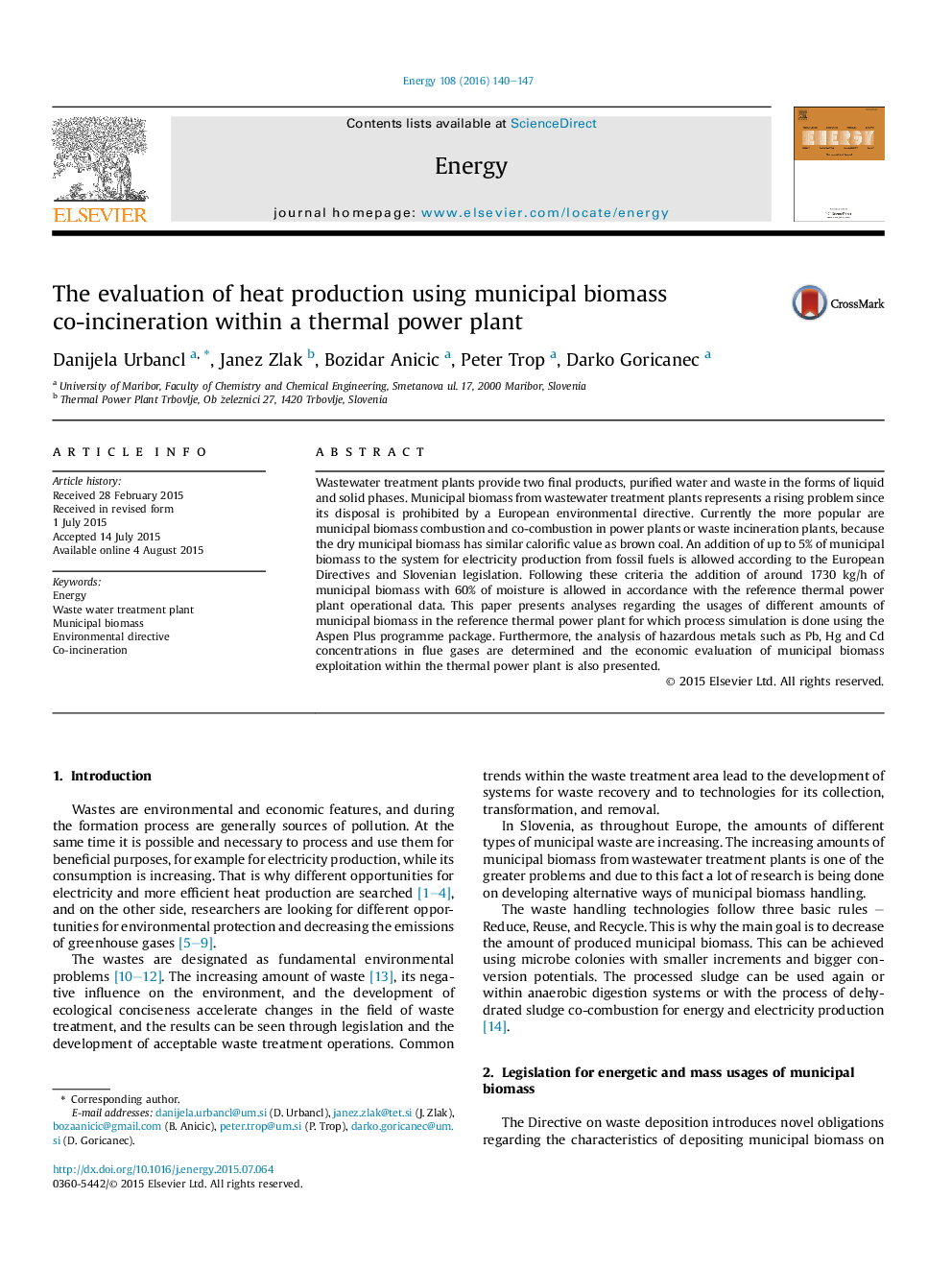| Article ID | Journal | Published Year | Pages | File Type |
|---|---|---|---|---|
| 1730908 | Energy | 2016 | 8 Pages |
•The 5% addition of municipal biomass (MB) to coal is allowed in thermal power plants.•The process simulation of the reference thermal power plant is done using Aspen Plus.•The influence of MB addition on electricity production is evaluated.•The economic evaluation of MB exploitation is presented.•At current conditions, the investment in such technology is acceptable.
Wastewater treatment plants provide two final products, purified water and waste in the forms of liquid and solid phases. Municipal biomass from wastewater treatment plants represents a rising problem since its disposal is prohibited by a European environmental directive. Currently the more popular are municipal biomass combustion and co-combustion in power plants or waste incineration plants, because the dry municipal biomass has similar calorific value as brown coal. An addition of up to 5% of municipal biomass to the system for electricity production from fossil fuels is allowed according to the European Directives and Slovenian legislation. Following these criteria the addition of around 1730 kg/h of municipal biomass with 60% of moisture is allowed in accordance with the reference thermal power plant operational data. This paper presents analyses regarding the usages of different amounts of municipal biomass in the reference thermal power plant for which process simulation is done using the Aspen Plus programme package. Furthermore, the analysis of hazardous metals such as Pb, Hg and Cd concentrations in flue gases are determined and the economic evaluation of municipal biomass exploitation within the thermal power plant is also presented.
